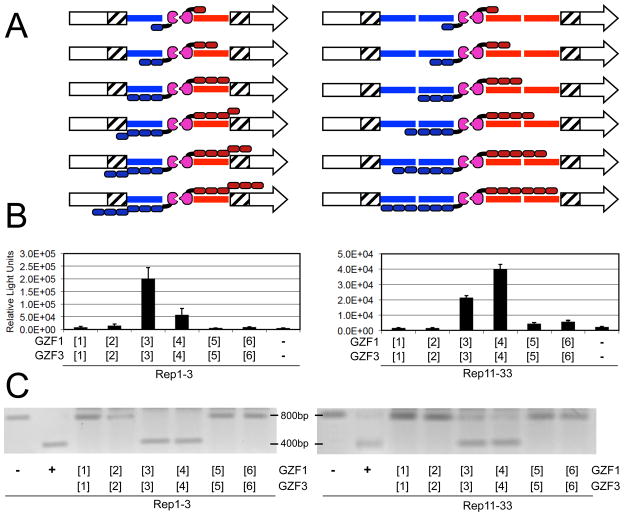Figure 2.
The effect of target site composition on ZFN activity. A) Cartoon of the experiments in which the full series of ZFNs were assayed on either target Rep1-3 (left) or Rep11-33 (right). Components are labeled as in Figure 1. B) ZFN activity in cells. The graph shows luciferase activity upon ZFN-mediated SSA using targets Rep1-3 (left) or Rep11-33 (right). C) In vitro cleavage activity. The activity of the ZFN pairs in an in vitro cleavage assay using a ~800-bp DNA containing the ZFN target site of Rep1-3 (left) or Rep11-33 (right). Cleavage produces two bands of ~400 bp. “−“, DNA with no ZFN; “+”, DNA digested by EcoRI, which cleaves just 3′ to the ZFN target site.

